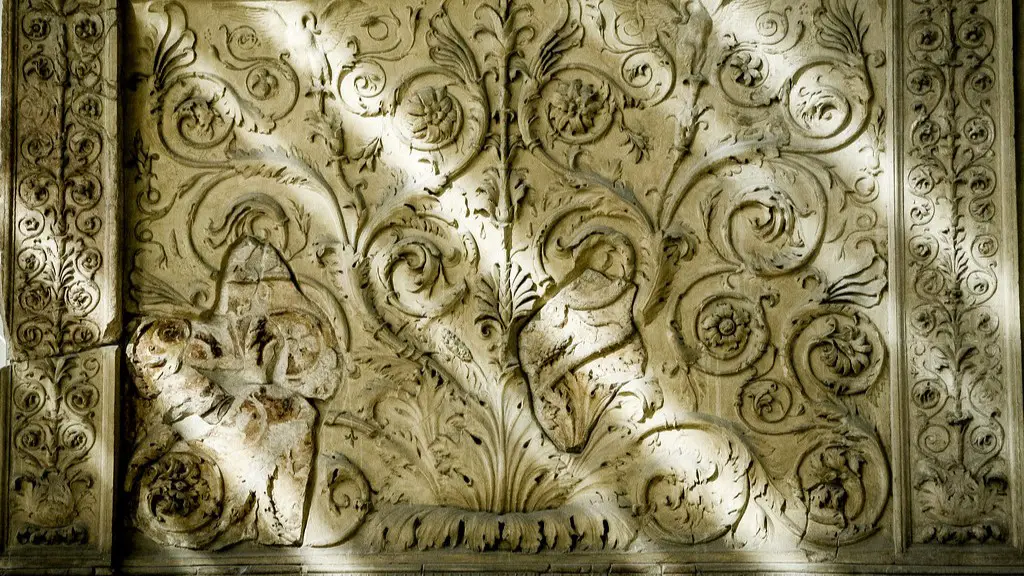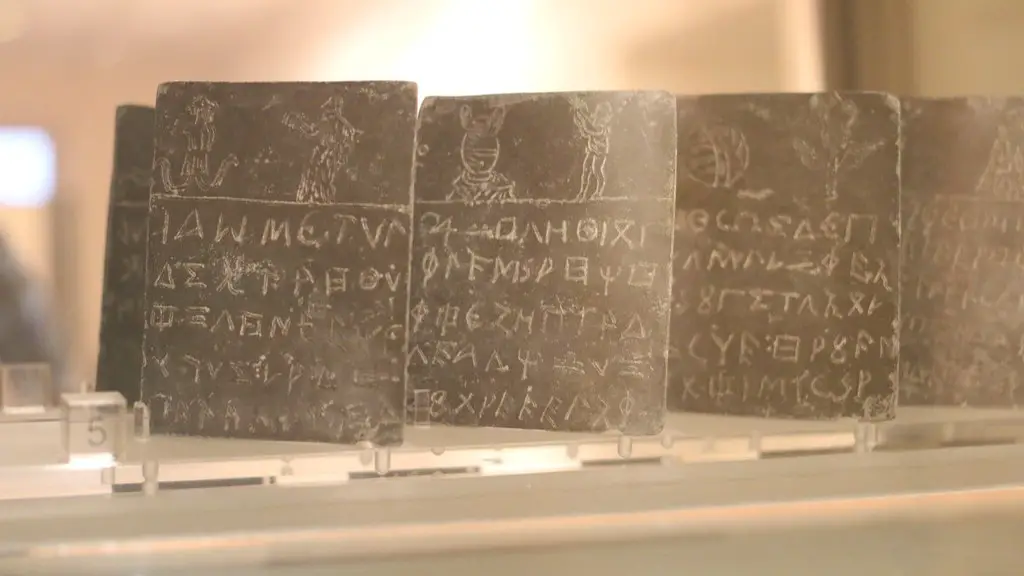The Law of ancient Rome is a set of principles and rules that were created and used in the Roman Empire. Some of these laws are still in use today. The most famous law code from ancient Rome is the Twelve Tables, which was created in 449 BC.
The Roman legal system was based on the laws of ancient Rome. These laws were created by the Roman Senate and were used to govern the Roman Empire.
What is Roman law based on?
The Twelve Tables were written in 449 BCE by a committee of ten men called the decemvirs. The Tables documented the centuries-old customary laws and became the foundation of Roman law as we know it. The Twelve Tables were an important step in the development of Roman law and helped to ensure that everyone was treated fairly under the law.
It is fascinating to think that many aspects of Roman law and the Roman Constitution are still used in some capacity today. It is a testament to the strength of those early concepts that they have been able to withstand the test of time. It is also a reminder of how influential the Roman Empire was in shaping the world we live in today.
What three systems of law were based on Roman law
Ancient Roman law was based on three different types of law: jus civile, jus gentium, and jus naturale. Jus civile was focused on the rights of Roman citizens, while jus gentium was for both citizens and non-citizens. Jus naturale was based on natural law principles that were common to all civilized societies.
Roman law was one of the most influential legal systems of all time. It was the law of ancient Rome from the founding of Rome in 753 BC to the fall of the Western Empire in AD 476. Roman law continued in the Eastern Empire until AD 1453. It is the basis for the legal system of most continental European countries. Roman law was a complex system of rules and regulations that governed all aspects of life in Rome. It was based on the concept of natural law, which is the idea that there is a higher law that governs all of us. Roman law was written down in the form of the Twelve Tables, which were compiled in 449 BC. The Twelve Tables were the first attempt to codify Roman law. They were a set of laws that applied to all citizens, regardless of social class. Roman law was later codified in the Justinian Code, which was compiled in AD 534. The Justinian Code was the most complete collection of Roman law. It was used as the basis for the legal system in the Eastern Roman Empire. Roman law had a great influence on the development of the legal systems of all continental European countries.
Is common law based on Roman law?
The Roman Civil Law is based on the Constitution, and Judicial Precedent is not binding in nature. The English Common Law was originated as uncodified law, though in present times it has also been codified. Judicial Precedent is binding in nature in the English Common Law.
The ius scriptum was the body of statute laws made by the legislature. The laws were known as leges (lit “laws”) and plebiscita (lit “plebiscites,” originating in the Plebeian Council). The ius scriptum was the foundation of the Roman Republic’s legal system and was the precursor to the modern legal system.
What was the first law in ancient Rome?
The Law of the Twelve Tables was the earliest written legislation of ancient Roman law, and was traditionally dated to 451-450 BC. The law was written in order to codify the existing oral laws, and was designed to be fair and accessible to all citizens. The law was carved into 12 large stone tablets, which were then displayed in a public place so that everyone could see them. The law covered a wide range of topics, including civil, criminal, and religious law.
The Roman legal system was a complex system of written and unwritten law that was based on the traditional law and legislation of the city of Rome. This system included the legislation of the assemblies, the resolves of the senate, the enactments of the emperors, the edicts of the praetors, the writings of the jurisconsults, and the case law of the courts.
What is an example of Roman law
This was a huge change as it extended citizenship to a huge number of people who were not previously able to enjoy its benefits. This new law was probably motivated by a desire to increase tax revenue and to make it easier to conscript people into the army. It also had the effect of making people feel more connected to the empire and less likely to rebel.
The Roman Republic was founded in 509 BC, and about 60 years later, the plebeians demanded a written code of laws. The main complaint was that because the laws were not in writing, government authorities and creditors could easily abuse the people. In 451 BC, the Twelve Tables were written and displayed in the Roman Forum. These were the first written laws of the Republic, and they guaranteed equality of everyone before the law, regardless of social class.
Is Spanish law based on Roman law?
The Spanish legal system is a civil law system based on comprehensive legal codes and laws rooted in Roman law, as opposed to common law, which is based on precedent court rulings. One of the key differences between the two systems is that in a civil law system codified laws are the primary source of law, while in common law systems, court decisions are the primary source of law. This means that in a civil law system like Spain’s, the legislature is the primary lawmaking body, while in a common law system, the judiciary is the primary lawmaking body.
Common law is a body of unwritten laws based on legal precedents established by the courts. Common law draws from institutionalized opinions and interpretations from judicial authorities and public juries. Common laws sometimes prove the inspiration for new legislation to be enacted.
What is the ancient law
Ancient Law is an important book by Henry James Sumner Maine. It was first published in 1861 and went through twelve editions during the lifetime of the author. The twelfth edition was published in 1888. A new edition, with notes by Frederick Pollock, was published in octavo in 1906.
The Code of Hammurabi is a notable set of laws that date back to ancient times. King Hammurabi of Babylon is said to have received the laws from the god Shamash, and they were carved into stone slabs that were then placed around the city. The Code of Hammurabi covers a wide range of topics, including family relations, property, helpfulness, and more. While some of the laws may seem harsh by today’s standards, they provide an interesting glimpse into the past.
Is European law based on Roman law?
Roman law is a great source of unity within European law. It is the foundation of European legal culture and an essential part of European identity. Roman law is the basis for the civil law legal systems of many countries and it has influenced the common law system as well. It is a great unifying force within European law.
The Italian legal system is based on the continental civil law tradition. This means that laws are largely based on written codes, rather than on judicial precedent. There is a strong emphasis on the importance of legal theory and scholarship, and on the role of the judge in interpreting the law. The Italian legal system is also known for its focus on the rights of the individual, and on ensuring fairness and justice in the administration of the law.
Conclusion
The Roman legal system is based on the law of ancient Rome, which is a system of laws and legal principles developed over centuries. The Roman legal system is one of the oldest and most complex legal systems in the world.
The law of ancient Rome was based on a number of different things, including the Twelve Tables, the Justinian Code, and the Code of hammurabi. These codes and tables were used to help define the law and to ensure that everyone was treated fairly. The law of ancient Rome was created to protect the people and to ensure that justice was served.





